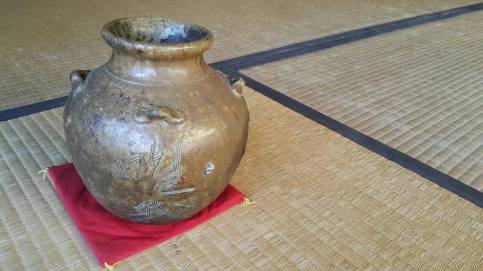Kan Nin Dokuso (part one)
From Kasumi An Study Center 霞庵 スタディセンター by Kasumi An Study Center

Artist: Paul Masse 2007. Inscription: 天上天下唯我独
“In the all the heavens and earth, only I am exalted!”
Kan Nin Dock Son is a phrase you may hear around the Bujinkan dojo this year. Is it the theme for the year? Maybe, maybe not. Who knows?! But whether it is a theme or not is really not important, it should give you something to ponder and explore this year in addition to your continued practice of the physical movement and techniques. Kan Nin 貫忍, steadfast and single-minded perseverance all the way. Doku Son 独尊、to be revered or exalted. It most likely refers to a story of the Buddha. The story is, when he was born, the Buddha took seven steps and pointed one finger up and one finger down and exclaimed, “In the all the heavens and earth, only I am exalted!”. What is this elusive I? Some think of it as me, my name, age ect. But you would lose some of the poetry. Who are you when your name, age, social status are stripped away. Going deeper, who are you when the body is stripped away and the mind faded and gone, and even your conscience vanishes like smoke after a fire?Maybe you have heard the Gokui (inner teachings) Persevere the body, Persevere the heart, and Persevere the conscience.
Your body had plopped out of this earth and it will dissolve back into the earth. No matter how good they wrap you like a mummy! But what of a natural energy? A power of nature that drives the seasons, sings thru a myriad of creatures? This power that keeps the clouds drifting and the water flowing, and an infinite number of stars alight? This natural power, the natural power of life is what we must become aware. When you have persevered thru all, this power will shine. Hatsumi Sensei once said to me, “it is like in the movies, when someone opens a treasure box, and their face is lit up by the golden light of the treasure.”. I really like this image. This is the treasure of Nin or Ninpo, 忍宝。 Kan Nin will help to uncover it. Be like Indiana Jones and go treasure hunting. The treasure is so near! When you uncover it, you won’t need to be and air bender or water bender or fire bender. You will know that you have been bending them all the time!

